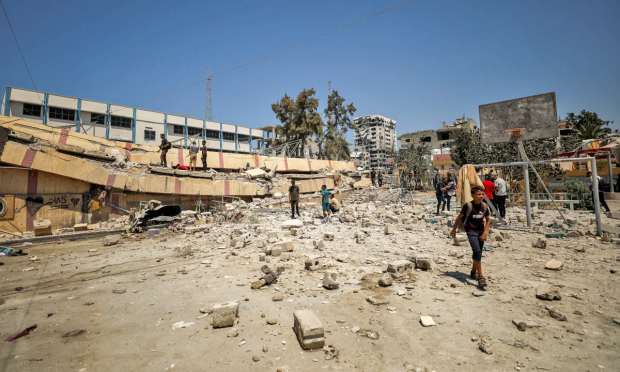With Gaza’s education system shattered by two years of gruelling war, Unicef’s regional director says he fears for a “lost generation” of children wandering ruined streets with nothing to do.
“This is the third year that there has been no school,” Edouard Beigbeder, the UN agency’s regional director for the Middle East and North Africa, said in Jerusalem after returning from the Palestinian territory.
“If we don’t start a real transition for all children in February, we will enter a fourth year. And then we can talk about a lost generation.”
The devastating conflict between Israel and Hamas reduced swathes of Gaza to rubble, displaced the vast majority of its population at least once and crippled public services.
The destruction “is almost omnipresent wherever you go,” Beigbeder said, according to a report in our sister paper Akhbar Al Khaleej.
“It is impossible to imagine 80 per cent of a territory that is completely flattened out or destroyed,” he added.
A US-brokered ceasefire which came into effect earlier in October has allowed Unicef and other education partners to get about one-sixth of children who should be in school into temporary “learning centres,” Beigbeder said.
“They have three days of learning in reading, mathematics and writing, but this is far from a formal education as we know it,” he added.
Beigbeder said that such learning centres, often located in schools or near displacement camps, consisted of metal structures covered with plastic sheeting or of tents.
He said there were sometimes chairs, cardboard boxes or wooden planks serving as tables, and that children would write on salvaged slates or plastic boards. “I’ve never seen everyone sitting properly,” he added, describing children on mats or carpets.
Despite the ceasefire, Beigbeder said the situation for Gaza’s education system was catastrophic, with 85pc of schools destroyed or unusable.
Of the buildings still standing, many are being used as shelters for displaced people, he said, with the situation compounded by the fact that many children and teachers are also on the move and looking to provide for their own families.
Gaza’s school system was already overcrowded before the conflict, with half the pre-war population under the age of 18.
Of the schools managed by the West Bank-based Palestinian Authority alone, Beigbeder said that some 80 out of 300 were in need of renovation.
He said 142 had been completely destroyed, while 38 were “completely inaccessible” because they were located in the area to which Israeli troops have withdrawn under the ceasefire.
The UN agency for Palestinian refugees (UNRWA) said last week that it was launching a “new e-learning school year” with the aim of reaching 290,000 pupils.


&uuid=(email))